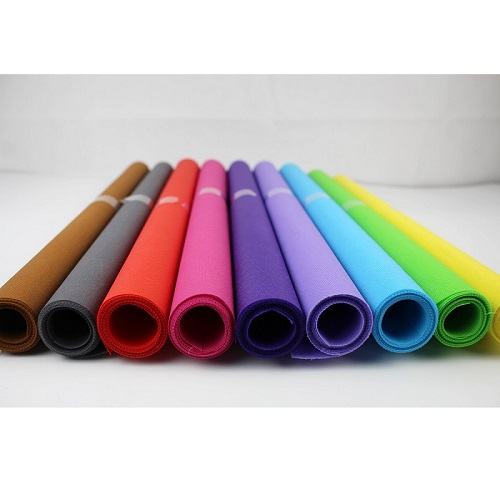In the realm of textiles, innovation and versatility reign supreme. Among the remarkable materials that have revolutionized various industries, PP spunbond nonwoven fabric stands out as a game-changer. This remarkable fabric, crafted from polypropylene, has taken the world by storm with its exceptional properties and wide-ranging applications. In this comprehensive guide, we will delve into the world of PP spunbond nonwoven fabric, exploring its unique characteristics, manufacturing process, and diverse uses that span across multiple sectors.

Understanding PP Spunbond Nonwoven Fabric:
PP spunbond nonwoven fabric is a unique material formed by bonding polypropylene fibers together without the traditional process of weaving or knitting. This innovative technique results in a fabric with exceptional strength, durability, and versatility, making it a preferred choice for a multitude of applications.
Manufacturing Process:
The production of PP spunbond nonwoven fabric involves several key steps:
- Raw Material Preparation: Polypropylene resin, the primary raw material, undergoes rigorous purification and preparation to ensure its quality and consistency.
- Polymer Extrusion: The molten polypropylene is extruded through spinnerets, creating continuous filaments that form the foundation of the fabric.
- Fiber Bonding: The extruded fibers are subjected to various bonding methods, such as thermal bonding or chemical bonding, to create a cohesive and durable fabric structure.
- Finishing: The nonwoven fabric undergoes additional processes like calendaring, embossing, or coating to enhance its properties and achieve desired surface characteristics.
Properties of PP Spunbond Nonwoven Fabric:
- Strength and Durability: PP spunbond nonwoven fabric exhibits exceptional tensile strength and tear resistance, making it highly durable and long-lasting.
- Water-Resistant: The nonwoven structure of the fabric effectively repels water, making it suitable for applications where moisture resistance is crucial.
- Breathability: Despite its water-resistant nature, PP spunbond nonwoven fabric allows for air permeability, ensuring breathability and comfort in various applications.
- Lightweight and Flexible: The fabric’s lightweight and flexible nature makes it easy to handle, manipulate, and convert into different shapes and forms.
- Eco-Friendly: PP spunbond nonwoven fabric is recyclable and reusable, contributing to sustainable practices and reducing environmental impact.
Applications of PP Spunbond Nonwoven Fabric:
The versatility of PP spunbond nonwoven fabric has led to its widespread adoption across numerous industries:
- Medical and Healthcare: The fabric’s hygienic properties make it ideal for surgical gowns, face masks, disposable bed sheets, and other medical supplies.
- Hygiene and Personal Care: PP spunbond nonwoven fabric is extensively used in baby diapers, feminine hygiene products, wet wipes, and disposable towels due to its softness, absorbency, and comfort.
- Agriculture: The fabric’s durability and water-resistant properties make it suitable for crop covers, weed control mats, and seedling bags, enhancing agricultural productivity.
- Packaging: PP spunbond nonwoven fabric serves as a lightweight and eco-friendly packaging material for various products, including food, beverages, and consumer goods.
- Industrial Applications: The fabric’s strength and versatility make it useful in filtration systems, insulation materials, and protective clothing in industrial settings.
PP spunbond nonwoven fabric has revolutionized the textile industry with its exceptional properties and diverse applications. Its strength, durability, water resistance, breathability, and eco-friendly nature make it a preferred choice for a wide range of industries. From medical and healthcare to hygiene and personal care, agriculture, packaging, and industrial applications, PP spunbond nonwoven fabric continues to redefine the boundaries of innovation and versatility, empowering businesses and consumers alike to achieve sustainable and efficient solutions.